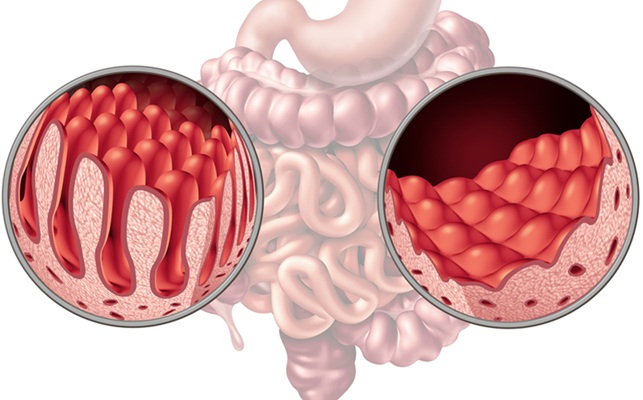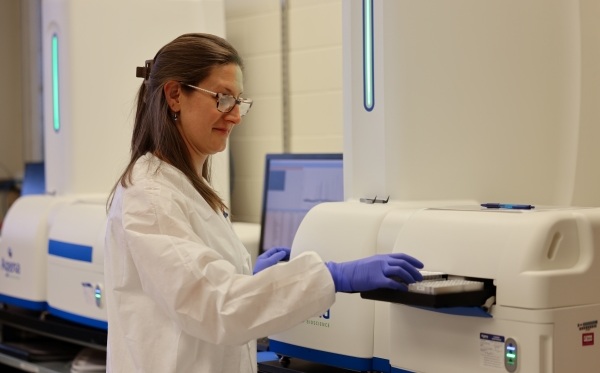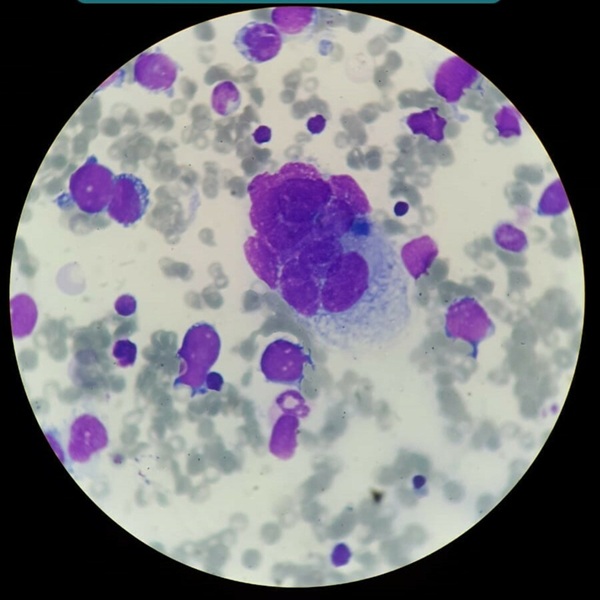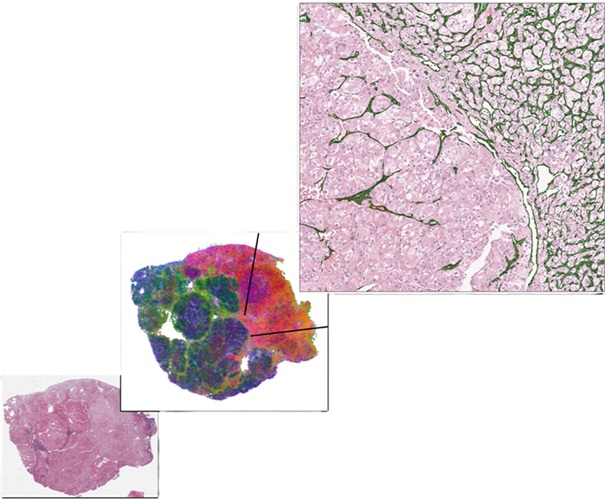Study Confirms Association of AD and High Levels of LDL Cholesterol
|
By LabMedica International staff writers Posted on 10 Jun 2019 |

Image: A molecule model of Apo E (Photo courtesy of Wikimedia Commons).
High LDL cholesterol levels have been linked to the risk of developing early-onset Alzheimer's disease (AD).
Early-onset Alzheimer's disease (EOAD), which manifests in individuals younger than age 65, accounts for about 10% of all Alzheimer's cases. In late-onset AD, elevated circulating cholesterol levels increase AD risk even after adjusting for the apolipoprotein E epsilon4 (APOE E4) allele, a major genetic factor for AD and elevated cholesterol levels; however, the role of circulating cholesterol levels in EOAD is unclear.
Investigators at Emory University (Atlanta, GA, USA) studied the association between circulating cholesterol levels and EOAD in order to identify genetic variants underlying this possible association. For this study, the investigators sequenced specific genomic regions of 2,125 subjects, 654 of whom had EOAD and 1,471 controls. They also determined LDL cholesterol levels in blood samples from 267 participants. To determine the underlying genetic variants, APOB, APP, PSEN1, and PSEN2 genes were sequenced in samples from 2125 EOAD cases and controls.
Results revealed that of the 2125 samples that underwent genetic sequencing, 1276 were from women and 654 were from patients with EOAD. APOE E4 explained 10.1% of the variance of EOAD. After controlling for APOE E4, EOAD cases had higher levels of total cholesterol, LDL cholesterol and the LDL protein Apo B than controls in 267 frozen samples. Approximately 3% of EOAD cases carried known AD-causing mutations. Gene-based rare variant burden testing in 2066 samples showed that rare APOB coding variants were significantly more abundant in EOAD cases after adjusting for sex and APOE E4.
The results did not find a link between HDL (high-density lipoprotein) cholesterol levels and EOAD, and only a very slight association between the disease and triglyceride levels.
"The big question is whether there is a causal link between cholesterol levels in the blood and Alzheimer's disease risk," said first author Dr. Thomas Wingo, assistant professor of neurology and human genetics at Emory University. "The existing data have been murky on this point. One interpretation of our current data is that LDL cholesterol does play a causal role. If that is the case, we might need to revise targets for LDL cholesterol to help reduce Alzheimer's risk. Our work now is focused on testing whether there is a causal link."
The study linking EOAD to high LDL cholesterol levels was published in the May 28, 2019, online edition of the journal JAMA Neurology.
Related Links:
Emory University
Early-onset Alzheimer's disease (EOAD), which manifests in individuals younger than age 65, accounts for about 10% of all Alzheimer's cases. In late-onset AD, elevated circulating cholesterol levels increase AD risk even after adjusting for the apolipoprotein E epsilon4 (APOE E4) allele, a major genetic factor for AD and elevated cholesterol levels; however, the role of circulating cholesterol levels in EOAD is unclear.
Investigators at Emory University (Atlanta, GA, USA) studied the association between circulating cholesterol levels and EOAD in order to identify genetic variants underlying this possible association. For this study, the investigators sequenced specific genomic regions of 2,125 subjects, 654 of whom had EOAD and 1,471 controls. They also determined LDL cholesterol levels in blood samples from 267 participants. To determine the underlying genetic variants, APOB, APP, PSEN1, and PSEN2 genes were sequenced in samples from 2125 EOAD cases and controls.
Results revealed that of the 2125 samples that underwent genetic sequencing, 1276 were from women and 654 were from patients with EOAD. APOE E4 explained 10.1% of the variance of EOAD. After controlling for APOE E4, EOAD cases had higher levels of total cholesterol, LDL cholesterol and the LDL protein Apo B than controls in 267 frozen samples. Approximately 3% of EOAD cases carried known AD-causing mutations. Gene-based rare variant burden testing in 2066 samples showed that rare APOB coding variants were significantly more abundant in EOAD cases after adjusting for sex and APOE E4.
The results did not find a link between HDL (high-density lipoprotein) cholesterol levels and EOAD, and only a very slight association between the disease and triglyceride levels.
"The big question is whether there is a causal link between cholesterol levels in the blood and Alzheimer's disease risk," said first author Dr. Thomas Wingo, assistant professor of neurology and human genetics at Emory University. "The existing data have been murky on this point. One interpretation of our current data is that LDL cholesterol does play a causal role. If that is the case, we might need to revise targets for LDL cholesterol to help reduce Alzheimer's risk. Our work now is focused on testing whether there is a causal link."
The study linking EOAD to high LDL cholesterol levels was published in the May 28, 2019, online edition of the journal JAMA Neurology.
Related Links:
Emory University
Latest Clinical Chem. News
- AI-Powered Blood Test Accurately Detects Ovarian Cancer
- Automated Decentralized cfDNA NGS Assay Identifies Alterations in Advanced Solid Tumors
- Mass Spectrometry Detects Bacteria Without Time-Consuming Isolation and Multiplication
- First Comprehensive Syphilis Test to Definitively Diagnose Active Infection In 10 Minutes
- Mass Spectrometry-Based Monitoring Technique to Predict and Identify Early Myeloma Relapse
- ‘Brilliantly Luminous’ Nanoscale Chemical Tool to Improve Disease Detection
- Low-Cost Portable Screening Test to Transform Kidney Disease Detection
- New Method Uses Pulsed Infrared Light to Find Cancer's 'Fingerprints' In Blood Plasma
- Carbon Nanotubes Help Build Highly Accurate Sensors for Continuous Health Monitoring
- Paper-Based Device Boosts HIV Test Accuracy from Dried Blood Samples
- AI-Powered Raman Spectroscopy Method Enables Rapid Drug Detection in Blood
- Novel LC-MS/MS Assay Detects Low Creatinine in Sweat and Saliva
- Biosensing Technology Breakthrough Paves Way for New Methods of Early Disease Detection
- New Saliva Test Rapidly Identifies Paracetamol Overdose
- POC Saliva Testing Device Predicts Heart Failure in 15 Minutes

- Screening Tool Detects Multiple Health Conditions from Single Blood Drop
Channels
Molecular Diagnostics
view channel
POC Oral Swab Test to Increase Chances of Pregnancy in IVF
Approximately 15% of couples of reproductive age experience involuntary childlessness. A significant reason for this is the growing trend of delaying family planning, a global shift that is expected to... Read more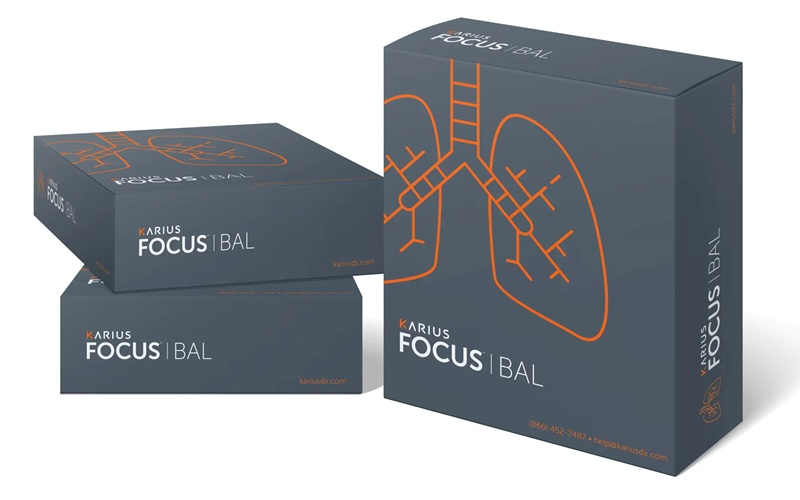
Microbial Cell-Free DNA Test Accurately Identifies Pathogens Causing Pneumonia and Other Lung Infections
Bronchoalveolar lavage (BAL) is a commonly used procedure for diagnosing lung infections, especially in immunocompromised patients. However, standard tests often fail to pinpoint the exact pathogen, leading... Read moreHematology
view channel
First Point-of-Care Heparin Monitoring Test Provides Results in Under 15 Minutes
Heparin dosing requires careful management to avoid both bleeding and clotting complications. In high-risk situations like extracorporeal membrane oxygenation (ECMO), mortality rates can reach about 50%,... Read more
New Scoring System Predicts Risk of Developing Cancer from Common Blood Disorder
Clonal cytopenia of undetermined significance (CCUS) is a blood disorder commonly found in older adults, characterized by mutations in blood cells and a low blood count, but without any obvious cause or... Read moreImmunology
view channel
Stem Cell Test Predicts Treatment Outcome for Patients with Platinum-Resistant Ovarian Cancer
Epithelial ovarian cancer frequently responds to chemotherapy initially, but eventually, the tumor develops resistance to the therapy, leading to regrowth. This resistance is partially due to the activation... Read more
Machine Learning-Enabled Blood Test Predicts Immunotherapy Response in Lymphoma Patients
Chimeric antigen receptor (CAR) T-cell therapy has emerged as one of the most promising recent developments in the treatment of blood cancers. However, over half of non-Hodgkin lymphoma (NHL) patients... Read moreMicrobiology
view channel
New Blood Test Detects Up to Five Infectious Diseases at POC
Researchers have developed a prototype flow-through assay capable of detecting up to five different infections, with results that can be quickly analyzed and transmitted via a specialized smartphone app.... Read more
Molecular Stool Test Shows Potential for Diagnosing TB in Adults with HIV
Tuberculosis (TB), caused by the bacterium Mycobacterium tuberculosis, led to 1.25 million deaths in 2023, with 13% of those occurring in people living with HIV. The current primary diagnostic method for... Read morePathology
view channel
Groundbreaking Chest Pain Triage Algorithm to Transform Cardiac Care
Cardiovascular disease is responsible for a third of all deaths worldwide, and chest pain is the second most common reason for emergency department (ED) visits. With EDs often being some of the busiest... Read more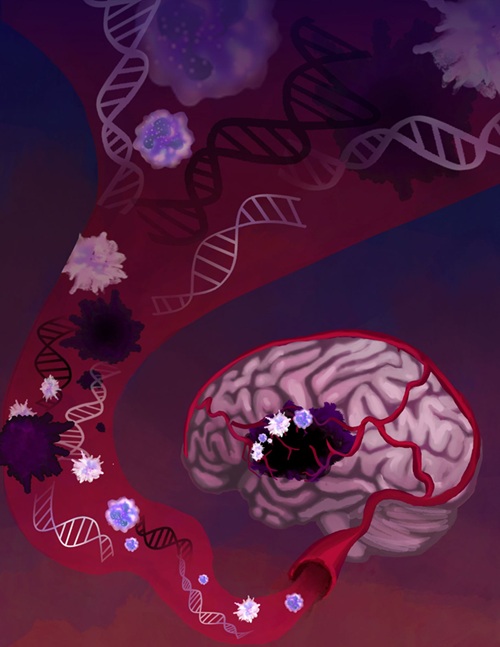
AI-Based Liquid Biopsy Approach to Revolutionize Brain Cancer Detection
Detecting brain cancers remains extremely challenging, with many patients only receiving a diagnosis at later stages after symptoms like headaches, seizures, or cognitive issues appear. Late-stage diagnoses... Read moreTechnology
view channel
Advanced Predictive Algorithms Identify Patients Having Undiagnosed Cancer
Two newly developed advanced predictive algorithms leverage a person’s health conditions and basic blood test results to accurately predict the likelihood of having an undiagnosed cancer, including ch... Read more
Light Signature Algorithm to Enable Faster and More Precise Medical Diagnoses
Every material or molecule interacts with light in a unique way, creating a distinct pattern, much like a fingerprint. Optical spectroscopy, which involves shining a laser on a material and observing how... Read more
Disposable Microchip Technology Could Selectively Detect HIV in Whole Blood Samples
As of the end of 2023, approximately 40 million people globally were living with HIV, and around 630,000 individuals died from AIDS-related illnesses that same year. Despite a substantial decline in deaths... Read more
Pain-On-A-Chip Microfluidic Device Determines Types of Chronic Pain from Blood Samples
Chronic pain is a widespread condition that remains difficult to manage, and existing clinical methods for its treatment rely largely on self-reporting, which can be subjective and especially problematic... Read moreIndustry
view channel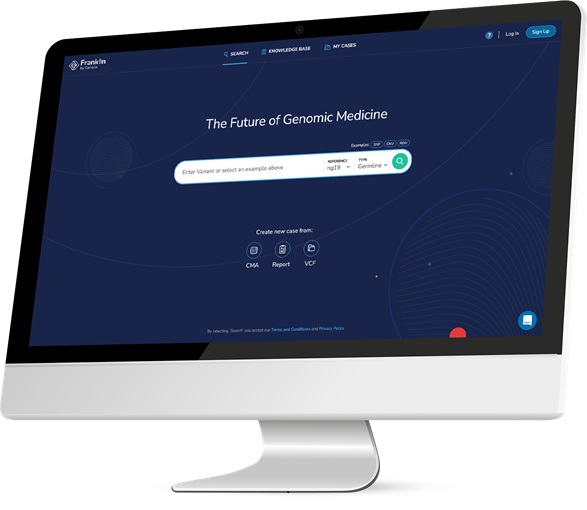
Qiagen Acquires NGS Analysis Software Company Genoox
QIAGEN (Venlo, the Netherlands) has signed a definitive agreement to acquire Genoox (Tel Aviv, Israel), a provider of artificial intelligence (AI)-powered software that enables clinical labs to scale and... Read more
Cepheid and Oxford Nanopore Technologies Partner on Advancing Automated Sequencing-Based Solutions
Cepheid (Sunnyvale, CA, USA), a leading molecular diagnostics company, and Oxford Nanopore Technologies (Oxford, UK), the company behind a new generation of sequencing-based molecular analysis technologies,... Read more
Grifols and Tecan’s IBL Collaborate on Advanced Biomarker Panels
Grifols (Barcelona, Spain), one of the world’s leading producers of plasma-derived medicines and innovative diagnostic solutions, is expanding its offer in clinical diagnostics through a strategic partnership... Read more











